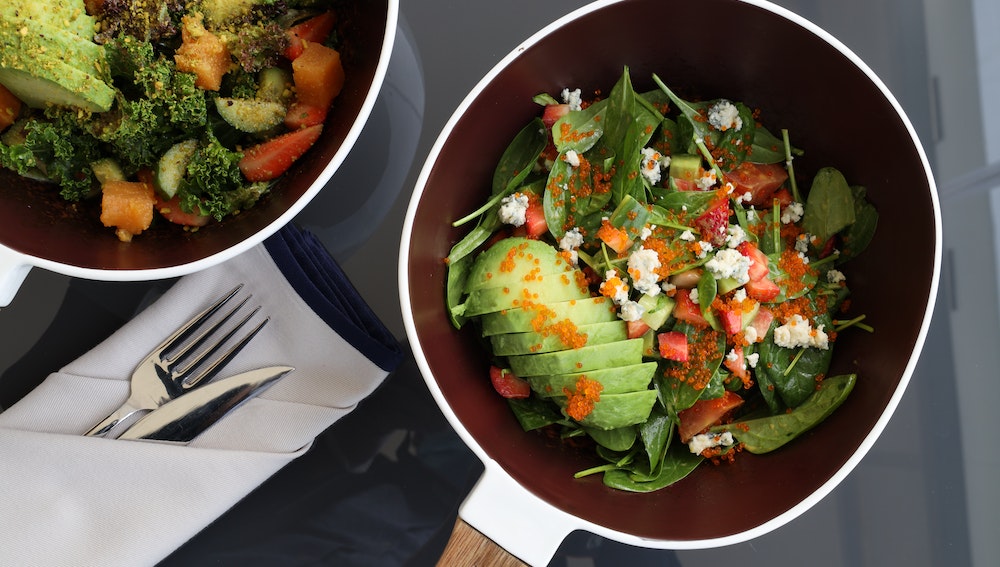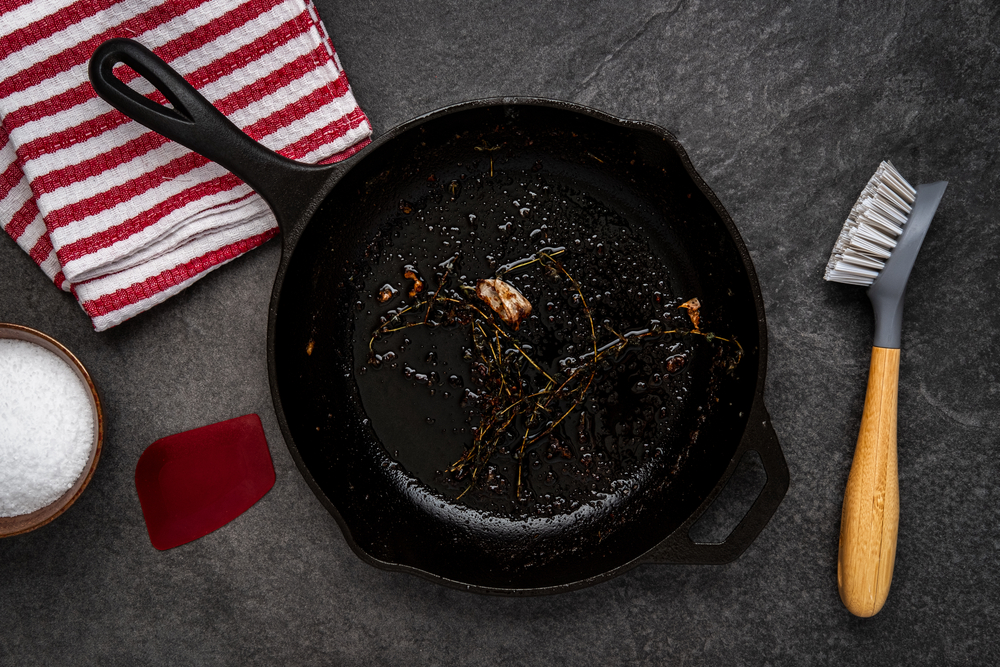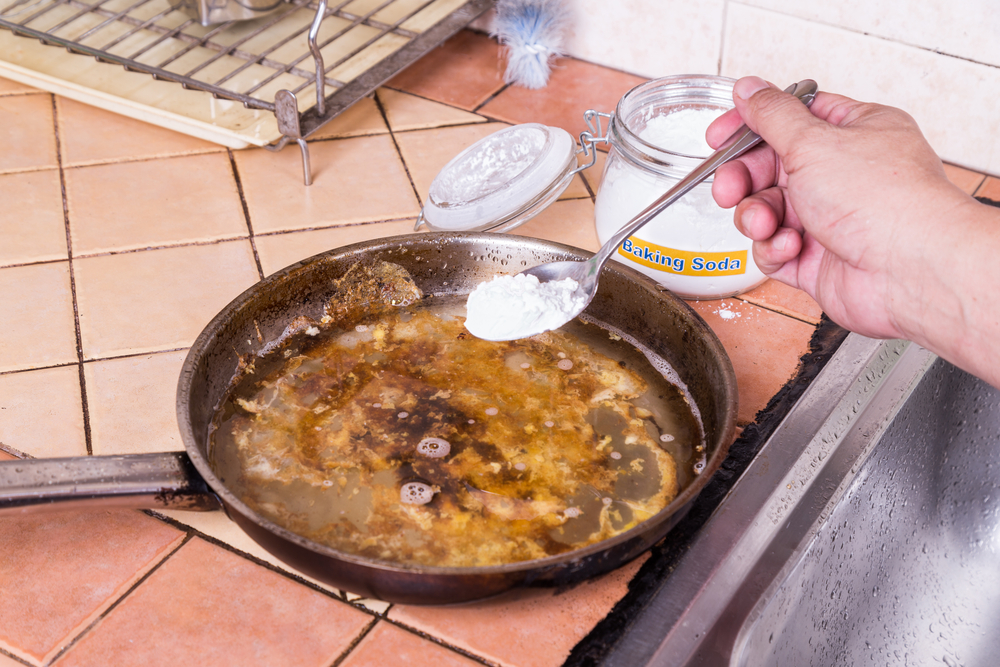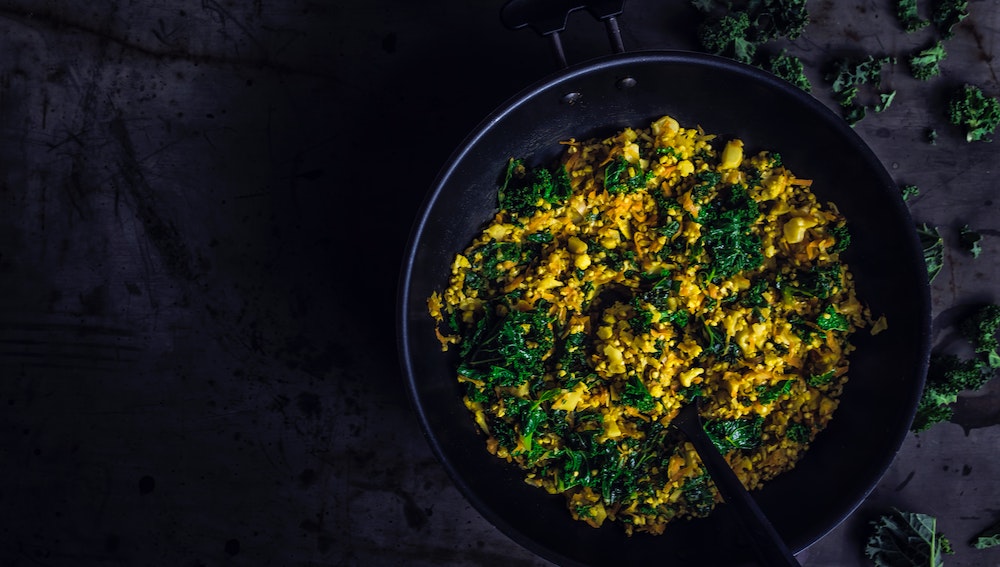Nonstick pans are a staple in many kitchens, as they make cooking and cleaning up a breeze. However, improper cleaning and maintenance can lead to the loss of the nonstick coating, making the pan less effective and potentially harmful to use.
In this article, we will explore the importance of proper cleaning and care for nonstick pans, as well as provide tips and tricks for maintaining their nonstick properties.
Understanding how nonstick pans work is crucial to their proper care. The nonstick coating is a thin layer of material applied to the cooking surface of the pan, which prevents food from sticking and makes for easy cleanup.
However, this coating is delicate and can be easily scratched or damaged by improper cleaning techniques or the use of metal utensils. It is important to handle nonstick pans with care in order to maintain their effectiveness and ensure their longevity.
Key Takeaways
- Proper cleaning and maintenance are essential to the longevity and effectiveness of nonstick pans.
- Nonstick coatings are delicate and can be easily damaged by improper cleaning techniques and the use of metal utensils.
- Using gentle cleaning tools and materials, avoiding common mistakes, and properly using and caring for nonstick pans can help maintain their nonstick properties.
Understanding Nonstick Pans

Nonstick pans are a popular choice for cooking due to their convenience and ease of use. They are especially useful for cooking delicate foods, such as eggs and fish, which can easily stick to traditional pans.
Nonstick pans have a special coating that prevents food from sticking to the surface, making them easy to clean and maintain.
Nonstick pans are available in a variety of materials, including Teflon, ceramic, and cast iron. Teflon is a popular choice due to its durability and non-stick properties. Ceramic nonstick pans are also a good option, as they are free from harmful chemicals and are environmentally friendly.
Cast iron nonstick pans are relatively new to the market and are known for their durability and even heating.
The lifespan of a nonstick pan depends on the quality of the coating and how well it is cared for. On average, nonstick pans can last up to five years with proper care. However, it is essential to note that the lifespan of a nonstick pan can be significantly reduced if it is not cared for properly.
To ensure the longevity of a nonstick pan, it is important to avoid using metal utensils, as they can scratch and damage the nonstick coating. Instead, opt for silicone, plastic, or wooden utensils.
Additionally, it is important to avoid using high heat when cooking with a nonstick pan, as this can damage the coating and reduce its non-stick properties.
In summary, nonstick pans are a convenient and useful addition to any kitchen. They are available in a variety of materials and can last up to five years with proper care. To ensure the longevity of a nonstick pan, it is important to avoid using metal utensils and high heat when cooking.
The Importance of Proper Cleaning

Proper cleaning of nonstick pans is crucial to ensure their longevity and performance. Neglecting to clean your nonstick pans properly can lead to a buildup of food residue, which can affect the nonstick coating and cause food to stick to the surface.
When cleaning nonstick pans, it is important to avoid using abrasive tools such as steel wool, scouring pads, or stiff scrubbing brushes, which can damage the surface. Instead, a quick scrub with mild dish soap and a soft cloth or sponge is enough to clean nonstick pans.
If there is burnt food or stubborn residue on the surface, it is recommended to soak the pan in warm, soapy water for a few minutes before cleaning. This will help loosen the residue and make it easier to clean.
It is also important to avoid using metal utensils on nonstick pans, as they can scratch the surface and damage the nonstick coating. Instead, use wooden, silicone, or plastic utensils to avoid damaging the surface.
Properly cleaning your nonstick pans after each use not only ensures their longevity but also helps maintain their nonstick properties. By properly cleaning your nonstick pans, you can enjoy cooking with them for years to come.
Cleaning Tools and Materials

When it comes to cleaning nonstick pans, it is essential to use the right tools and materials to avoid damaging the surface. Here are some of the cleaning tools and materials that are safe to use on nonstick pans:
- Sponge: A soft sponge is a gentle and effective way to scrub away food residue from nonstick pans. Avoid using abrasive sponges that can scratch the surface.
- Soft Cloth: A soft cloth is another gentle way to clean nonstick pans. It is best to use a cloth that is specifically designed for cleaning nonstick surfaces.
- Paper Towel: Paper towels can be used to wipe away excess oil or grease from nonstick pans before washing them.
- Microfiber Cloth: A microfiber cloth is a soft and absorbent cloth that can be used to clean nonstick pans without leaving any scratches.
- Dish Soap: Mild dish soap is safe to use on nonstick pans. It is important to use a small amount of soap and rinse the pan thoroughly with warm water.
- Water: Water is the most important cleaning material when it comes to cleaning nonstick pans. It is best to use warm water to help loosen food residue and make it easier to clean.
- Baking Soda: Baking soda is a natural cleaning agent that can be used to remove stubborn stains from nonstick pans. To use, mix baking soda with warm water to create a paste and apply it to the stained area. Let it sit for a few minutes before rinsing it off with warm water.
- Vinegar: Vinegar is another natural cleaning agent that can be used to remove stains from nonstick pans. To use, mix equal parts of vinegar and water and apply it to the stained area. Let it sit for a few minutes before rinsing it off with warm water.
- Kosher Salt: Kosher salt can be used to scrub away stubborn food residue from nonstick pans. Sprinkle a small amount of salt onto the pan and use a soft sponge or cloth to scrub away the residue.
- Detergents and Cleansers: Some nonstick pans may require the use of specialized detergents or cleansers to remove stubborn stains. Always check the manufacturer’s instructions before using any cleaning products on your nonstick pan.
Overall, it is important to use gentle cleaning tools and materials when cleaning nonstick pans to avoid damaging the surface. With the right tools and materials, cleaning nonstick pans can be a quick and easy task.
Cleaning Process

To ensure the longevity of nonstick pans, it is crucial to clean them properly after each use. Here are some tips for cleaning nonstick pans:
- Hand-wash the pan using a mild dish soap and a soft cloth or sponge. Avoid using abrasive sponges or steel wool, as they can scratch the nonstick surface.
- Rinse the pan with lukewarm water, not hot water, as hot water can damage the nonstick coating.
- For stubborn residue, soak the pan in warm, soapy water for a few hours before gently scrubbing it clean.
- Wooden utensils can also be used for deep cleaning. Boiling a 50/50 mixture of white vinegar and water and using a wooden spoon or spatula to gently scrape stubborn residue can be effective.
- After cleaning, dry the pan thoroughly with a soft towel or let it air dry before storing it.
By following these simple steps, nonstick pans can be kept in good condition and last for years.
Avoiding Common Mistakes
Taking proper care of nonstick pans is essential to maintaining their quality and prolonging their lifespan. However, there are several common mistakes that people often make when cleaning and using them, which can lead to damage and decrease their effectiveness. Here are some tips on how to avoid these common mistakes and keep your nonstick pans in top shape:
- Avoid using harsh or abrasive cleaning materials: Nonstick pans should not be cleaned with steel wool, scouring pads, or harsh cleaning agents. These materials can scratch and damage the nonstick coating, making it less effective over time. Instead, use a soft sponge or cloth and gentle dish soap to clean your nonstick pans.
- Avoid using high temperatures: Nonstick pans should not be used at high temperatures, as this can cause warping and damage to the nonstick coating. It is best to use low to medium heat settings when cooking with nonstick pans.
- Avoid using metal utensils: Metal utensils can scratch and damage the nonstick coating on your pans. Instead, use silicone, nylon, or wooden utensils when cooking with nonstick pans.
- Avoid putting nonstick pans in the dishwasher: While some nonstick pans may be labeled as dishwasher safe, it is generally best to avoid putting them in the dishwasher. The harsh detergents and high heat can damage the nonstick coating and decrease its effectiveness over time.
- Avoid using abrasive scrubbing brushes: Nonstick pans should not be scrubbed with abrasive scrubbing brushes, as this can scratch and damage the nonstick coating. Instead, use a soft sponge or cloth to clean your nonstick pans.
- Avoid using damaged pans: Nonstick pans with peeling or flaking coatings should not be used, as this can be harmful to your health. If your nonstick pan is damaged, it is best to replace it.
By avoiding these common mistakes, you can keep your nonstick pans in top shape and enjoy their benefits for years to come.
Proper Use of Nonstick Pans

Nonstick pans are a popular choice for cooking because they make it easy to cook without food sticking to the surface. However, to ensure that your nonstick pans last for a long time, it is important to use them properly.
Here are some tips on how to use your nonstick pans correctly:
- Use the right cooking utensils: When cooking with nonstick pans, it is important to use the right utensils. Metal utensils can scratch and damage the nonstick surface, so it is best to use silicone, plastic, or wooden utensils instead.
- Use the right amount of oil: While nonstick pans are designed to require less oil than traditional pans, it is still important to use some oil to prevent food from sticking. A light coating of oil or butter is usually sufficient. Nonstick cooking sprays can also be used, but be sure to follow the manufacturer’s instructions.
- Use medium heat: Nonstick pans can be used on medium heat, but avoid using high heat as it can damage the nonstick coating. If you need to cook at a higher temperature, use a different type of pan.
- Avoid cold water: When cleaning nonstick pans, avoid using cold water on a hot pan as it can cause warping. Instead, allow the pan to cool down before cleaning.
- Clean properly: To clean nonstick pans, use a soft sponge or cloth and mild dish soap. Avoid using abrasive cleaners or scrubbers that can damage the nonstick surface. If food is stuck on the pan, soak it in warm water for a few minutes before cleaning.
By following these tips, you can ensure that your nonstick pans last for a long time and continue to provide you with easy and convenient cooking options.
Choosing the Right Utensils
When it comes to nonstick pans, choosing the right utensils is crucial to maintaining the integrity of the nonstick coating. Using the wrong utensils can cause scratches and damage to the coating, which can lead to food sticking to the pan and reduce its lifespan.
Metal utensils, such as stainless steel or copper, are not recommended for use with nonstick pans. They can easily scratch the surface of the pan, which can lead to the nonstick coating peeling off over time. If you must use metal utensils, use ones that are coated with silicone or nylon to prevent scratching.
Silicone utensils are a great option for nonstick pans. They are heat-resistant, flexible, and gentle on the surface of the pan. They come in a variety of shapes and sizes, making them perfect for all types of cooking.
Wooden utensils, such as a wooden spoon or spatula, are another good option for nonstick pans. They are gentle on the surface of the pan and won’t scratch or damage the coating. However, wooden utensils can absorb flavors and odors from the food, so it’s important to clean them thoroughly after each use.
When choosing cooking utensils for nonstick pans, it’s important to look for ones that are labeled as “non-scratch” or “non-abrasive.” These utensils are designed to be gentle on the surface of the pan and won’t cause any damage to the nonstick coating.
In summary, when choosing utensils for nonstick pans, it’s important to choose ones that are gentle on the surface of the pan and won’t scratch or damage the nonstick coating. Silicone and wooden utensils are great options, while metal utensils should be avoided or coated with silicone or nylon.
Maintenance and Care Tips

Nonstick pans are a great addition to any kitchen, but they do require some maintenance and care to ensure their longevity. Here are some tips to keep your nonstick pans in great shape:
Season the Pan
Before using your nonstick pan for the first time, it is recommended to season the pan. This process involves heating the pan with a small amount of oil and wiping it clean with a paper towel. Seasoning the pan helps to create a natural nonstick surface and can also help to prevent rust and oxidation.
Oiling
It is important to use a small amount of oil or cooking spray when cooking with nonstick pans. This helps to prevent food from sticking and can also help to prolong the life of the nonstick coating. However, be careful not to use too much oil as this can cause the coating to break down over time.
Storing
When storing nonstick pans, it is important to avoid stacking them on top of each other as this can cause scratches and damage to the nonstick coating. Instead, store them in a dry, cool place with a protective layer between each pan.
Scratching
Avoid using metal utensils or abrasive sponges when cooking with nonstick pans as this can cause scratches and damage to the nonstick coating. Instead, use wooden or silicone utensils and a soft sponge or cloth for cleaning.
Rust and Oxidation
If you notice any rust or oxidation on your nonstick pan, it is important to address it immediately. Use a soft sponge or cloth to gently remove any rust or oxidation, and then season the pan again to help prevent further damage.
By following these maintenance and care tips, you can help to extend the life of your nonstick pans and ensure that they continue to perform well for years to come.
When to Replace Your Pan
Nonstick pans are a kitchen staple for many home cooks due to their convenience and ease of use. However, they don’t last forever. Knowing when to replace your nonstick pan is essential to maintaining a safe and efficient kitchen.
A good rule of thumb is to replace your nonstick pan approximately every five years. Over time, the nonstick coating can wear down, making it less effective and potentially exposing you to harmful chemicals.
If you notice your pan is becoming warped, discolored, or scratched, it’s time to stop using it and invest in a new one.
It’s important to note that if you use your nonstick pan frequently or with high heat, it may need to be replaced sooner than five years. Additionally, if you notice any flaking or peeling of the nonstick coating, it’s time to replace the pan immediately as this can be a health hazard.
When shopping for a new nonstick pan, look for options that are free of PFOA, PFAS, and other harmful chemicals. Many manufacturers have begun producing safer nonstick options, such as ceramic or diamond-infused coatings.
In summary, replacing your nonstick pan every five years or when it becomes warped, discolored, or scratched is essential to maintaining a safe and efficient kitchen. Keep an eye out for any flaking or peeling of the nonstick coating, and invest in a safer, chemical-free option when shopping for a replacement.
Special Considerations for Different Types of Pans
When it comes to cleaning nonstick pans, there are a few special considerations to keep in mind depending on the type of pan you have. Here are some tips for cleaning and maintaining different types of nonstick pans:
Ceramic Pans
Ceramic nonstick pans are known for their durability and scratch-resistant surface. However, they can still be damaged if not cleaned properly. To clean a ceramic nonstick pan, avoid using abrasive sponges or harsh cleaning products. Instead, use a soft sponge or cloth and mild dish soap. If there are any stubborn stains or burnt-on food, try soaking the pan in warm water and dish soap for a few minutes before scrubbing.
Teflon Pans
Teflon is a popular brand of nonstick coating that is known for its easy release and non-stick properties. However, Teflon pans can be easily scratched or damaged if not cleaned properly. To clean a Teflon pan, avoid using metal utensils or abrasive sponges. Instead, use a soft sponge or cloth and mild dish soap. If there are any stubborn stains or burnt-on food, try soaking the pan in warm water and dish soap for a few minutes before scrubbing.
Cast Iron Pans
Cast iron pans are known for their durability and even heating properties. However, they require a bit more maintenance than other types of nonstick pans. To clean a cast iron pan, avoid using soap or harsh cleaning products. Instead, use a stiff brush or scraper to remove any food particles or residue.
Then, rinse the pan with hot water and dry it thoroughly with a towel. To prevent rust, it’s important to season your cast iron pan regularly with a thin layer of oil.
Dishwasher-Safe Pans
Some nonstick pans are dishwasher-safe, which can make cleaning them a breeze. However, it’s important to check the manufacturer’s instructions before putting your pan in the dishwasher. Some nonstick coatings can be damaged by high temperatures or harsh detergents. If your pan is dishwasher-safe, make sure to place it on the top rack and avoid using any abrasive sponges or cleaning products.
Dishwasher Unsafe Pans
Some nonstick pans are not dishwasher-safe, which means they require a bit more care when it comes to cleaning. To clean a non-dishwasher-safe pan, avoid using harsh cleaning products or abrasive sponges. Instead, use a soft sponge or cloth and mild dish soap.
If there are any stubborn stains or burnt-on food, try soaking the pan in warm water and dish soap for a few minutes before scrubbing. It’s also important to dry your pan thoroughly after washing to prevent any water spots or damage to the nonstick coating.
Frequently Asked Questions
What is the best way to clean a nonstick pan without damaging the coating?
The best way to clean a nonstick pan without damaging the coating is to use a soft sponge or cloth with warm, soapy water.
Avoid using abrasive scrubbers or harsh chemicals, which can scratch or damage the nonstick coating. It’s also recommended to avoid using metal utensils when cooking with nonstick pans, as they can scratch the coating and lead to damage.
Can you use baking soda to clean a nonstick pan?
Baking soda is a gentle abrasive that can be used to clean nonstick pans, but it’s important to use it correctly to avoid damaging the coating.
Mix baking soda with water to create a paste, then apply it to the pan with a soft sponge or cloth. Gently scrub the pan in a circular motion, then rinse with warm water and dry thoroughly.
Is it safe to use a nonstick pan that has burnt residue?
It’s not recommended to use a nonstick pan that has burnt residue, as this can release toxic fumes when heated. If your nonstick pan has burnt residue, it’s best to discard it and replace it with a new one.
How do you remove sticky residue from a nonstick pan?
To remove sticky residue from a nonstick pan, mix equal parts water and vinegar in the pan and bring it to a simmer. Allow the mixture to cool, then wash the pan with warm, soapy water and a soft sponge or cloth. Avoid using abrasive scrubbers or harsh chemicals, which can scratch or damage the nonstick coating.
Can you wash nonstick pans in the dishwasher?
While some nonstick pans are labeled as dishwasher-safe, it’s generally recommended to wash them by hand to avoid damage to the coating. Dishwashers can be harsh on nonstick coatings, and over time, this can lead to damage or wear.
How do you restore the nonstick coating on a pan?
It’s not possible to restore the nonstick coating on a pan once it’s been damaged or worn away. If your nonstick pan is no longer nonstick, it’s best to replace it with a new one to ensure safe and effective cooking.





